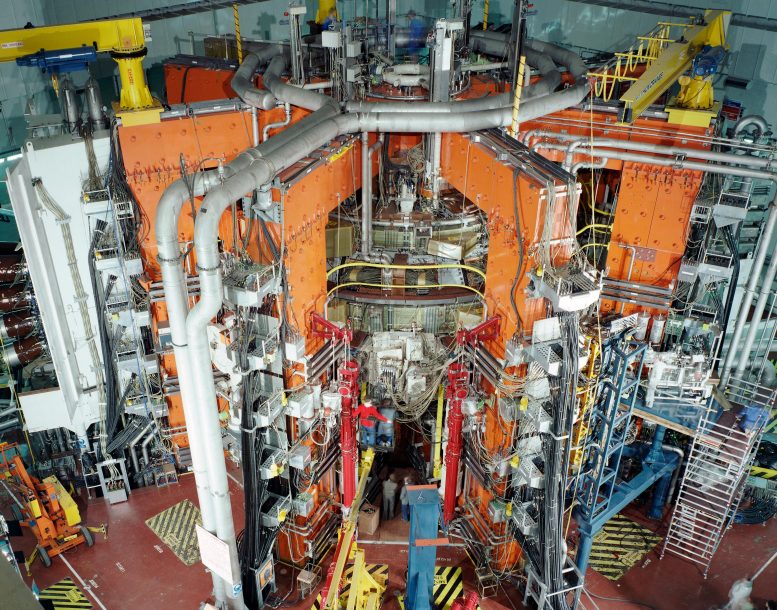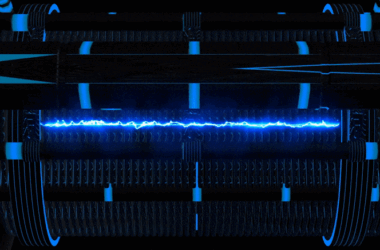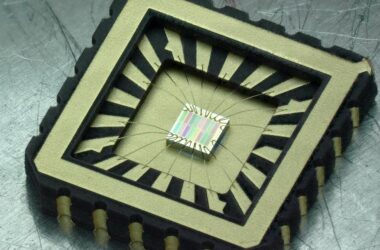
Les réacteurs à fusion magnétique contiennent un plasma très chaud dans un récipient en forme de beignet appelé tokamak.
La fusion nucléaire a franchi une étape importante grâce à l’amélioration des parois des réacteurs – cette avancée technique prépare les réacteurs du futur.
Des scientifiques d’un laboratoire anglais ont pulvérisé le record de la quantité d’énergie produite lors d’une réaction de fusion contrôlée et durable. La production de 59 mégajoules d’énergie sur cinq secondes. à l’expérience Joint European Torus – ou JET – en Angleterre a été de59 mégajoules d’énergie sur cinq secondes . appelé “une percée” par certains médias.et a suscité beaucoup d’enthousiasme parmi les physiciens. Mais la ligne commune concernant la production d’électricité par fusion est qu’il s’agit d’une “révolution “.toujours à 20 ans .”
Nous sommes un physicien nucléaire et un ingénieur nucléairequi étudient la manière de développer la fusion nucléaire contrôlée dans le but de produire de l’électricité.
Les résultats du JET témoignent d’avancées remarquables dans la compréhension de la physique de la fusion. Mais tout aussi important, il montre que les nouveaux matériaux utilisés pour construire les parois internes du réacteur de fusion ont fonctionné comme prévu. Le fait que la nouvelle construction des parois ait fonctionné aussi bien est ce qui différencie ces résultats des étapes précédentes et fait passer la fusion magnétique du stade de rêve à celui de réalité.

Les réacteurs de fusion écrasent deux formes d’hydrogène ensemble (en haut) pour qu’elles fusionnent, produisant de l’hélium et un électron à haute énergie (en bas).
Fusion de particules
La fusion nucléaire est la fusion de deux noyaux atomiques en un seul noyau composé. Ce noyau se brise ensuite et libère de l’énergie sous la forme de nouveaux atomes et de nouvelles particules qui s’échappent de la réaction. Une centrale à fusion capturerait les particules qui s’échappent et utiliserait leur énergie pour produire de l’électricité.
Il existe quelques différentes façons de contrôler la fusion sur Terre en toute sécurité . Notre recherche se concentre sur l’approche adoptée par le JET, qui utilise les technologies suivantes des champs magnétiques puissants pour confiner les atomesjusqu’à ce qu’ils soient chauffés à une température suffisamment élevée pour qu’ils fusionnent.
Le combustible des réacteurs actuels et futurs est constitué de deux isotopes différents de l’hydrogène – c’est-à-dire qu’ils possèdent le même proton, mais un nombre différent de neutrons – appelés deutérium et tritium. L’hydrogène normal possède un proton et aucun neutron dans son noyau. Le deutérium a un proton et un neutron, tandis que le tritium a un proton et deux neutrons.
Pour qu’une réaction de fusion soit réussie, les atomes du combustible doivent d’abord devenir si chauds que les électrons se détachent des noyaux. Cela crée plasma – a collection of positive ions and electrons. You then need to keep heating that plasma until it reaches a temperature over 200 million degrees Fahrenheit (100 million Celsius). This plasma must then be kept in a confined space at high densities for a long enough period of time for the fuel atoms to collide into each other and fuse together.
To control fusion on Earth, researchers developed donut-shaped devices – called tokamaks – which use magnetic fields to contain the plasma. Magnetic field lines wrapping around the inside of the donut act like train tracks that the ions and electrons follow. By injecting energy into the plasma and heating it up, it is possible to accelerate the fuel particles to such high speeds that when they collide, instead of bouncing off each other, the fuel nuclei fuse together. When this happens, they release energy, primarily in the form of fast-moving neutrons.
During the fusion process, fuel particles gradually drift away from the hot, dense core and eventually collide with the inner wall of the fusion vessel. To prevent the walls from degrading due to these collisions – which in turn also contaminates the fusion fuel – reactors are built so that they channel the wayward particles toward a heavily armored chamber called the divertor. This pumps out the diverted particles and removes any excess heat to protect the tokamak.

The JET magnetic fusion experiment is the largest tokamak in the world. Credit: EFDA JET
The walls are important
A major limitation of past reactors has been the fact that divertors can’t survive the constant particle bombardment for more than a few seconds. To make fusion power work commercially, engineers need to build a tokamak vessel that will survive for years of use under the conditions necessary for fusion.
The divertor wall is the first consideration. Though the fuel particles are much cooler when they reach the divertor, they still have enough energy to knock atoms loose from the wall material of the divertor when they collide with it. Previously, JET’s divertor had a wall made of graphite, but graphite absorbs and traps too much of the fuel for practical use.
Around 2011, engineers at JET upgraded the divertor and inner vessel walls to tungsten. Tungsten was chosen in part because it has the highest melting point of any metal – an extremely important trait when the divertor is likely to experience heat loads nearly 10 times higher than the nose cone of a space shuttle reentering the Earth’s atmosphere. The inner vessel wall of the tokamak was upgraded from graphite to beryllium. Beryllium has excellent thermal and mechanical properties for a fusion reactor – it absorbs less fuel than graphite but can still withstand the high temperatures.
The energy JET produced was what made the headlines, but we’d argue it is in fact the use of the new wall materials which make the experiment truly impressive because future devices will need these more robust walls to operate at high power for even longer periods of time. JET is a successful proof of concept for how to build the next generation of fusion reactors.

The ITER fusion reactor, seen here in a diagram, is going to incorporate the lessons of JET, but at a much bigger and more powerful scale. Credit: Oak Ridge National Laboratory, ITER Tokamak and Plant Systems
The next fusion reactors
The JET tokamak is the largest and most advanced magnetic fusion reactor currently operating. But the next generation of reactors is already in the works, most notably the ITER experiment, set to begin operations in 2027. ITER – which is Latin for “the way” – is under construction in France and funded and directed by an international organization that includes the U.S.
ITER is going to put to use many of the material advances JET showed to be viable. But there are also some key differences. First, ITER is massive. The fusion chamber is 37 feet (11.4 meters) tall and 63 feet (19.4 meters) around – more than eight times larger than JET. In addition, ITER will utilize superconducting magnets capable of producing stronger magnetic fields for longer periods of time compared to JET’s magnets. With these upgrades, ITER is expected to smash JET’s fusion records – both for energy output and how long the reaction will run.
ITER is also expected to do something central to the idea of a fusion powerplant: produce more energy than it takes to heat the fuel. Models predict that ITER will produce around 500 megawatts of power continuously for 400 seconds while only consuming 50 MW of energy to heat the fuel. This mean the reactor produced 10 times more energy than it consumed – a huge improvement over JET, which required roughly three times more energy to heat the fuel than it produced for its recent 59 megajoule record.
JET’s recent record has shown that years of research in plasma physics and materials science have paid off and brought scientists to the doorstep of harnessing fusion for power generation. ITER will provide an enormous leap forward toward the goal of industrial scale fusion power plants.
Written by:
- David Donovan – Associate Professor of Nuclear Engineering, University of Tennessee
- Livia Casali – Assistant Professor of Nuclear Engineering, Zinkle Faculty Fellow, University of Tennessee



